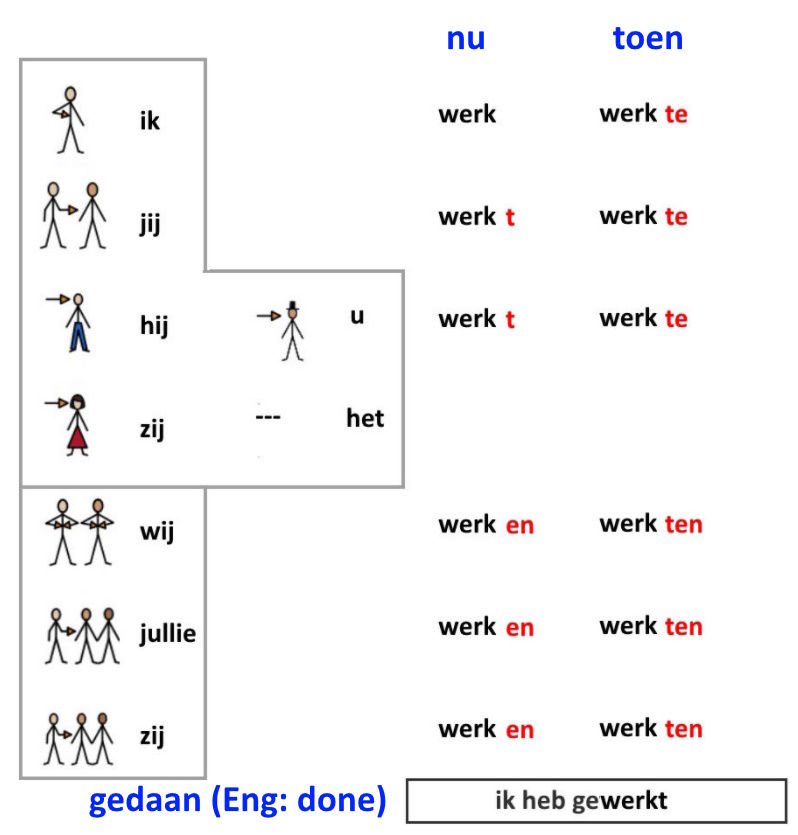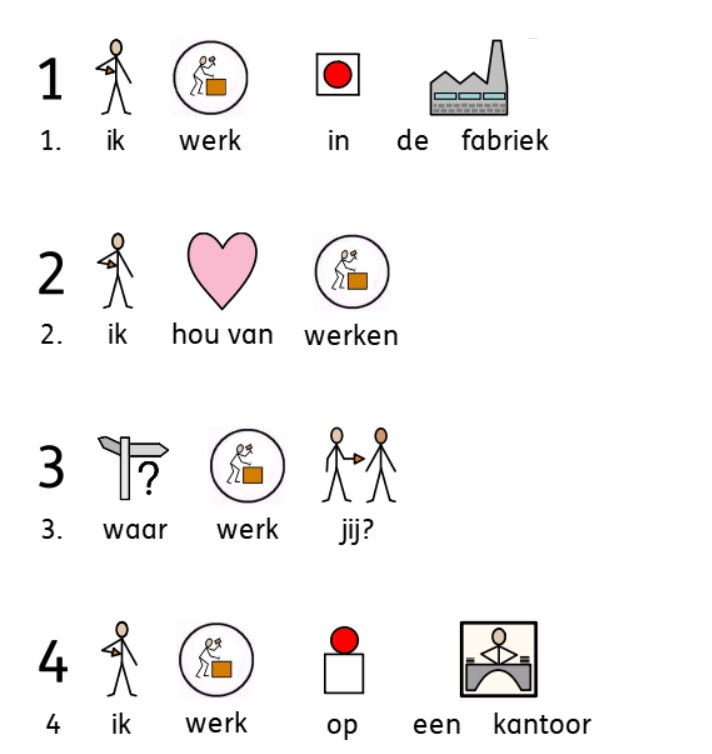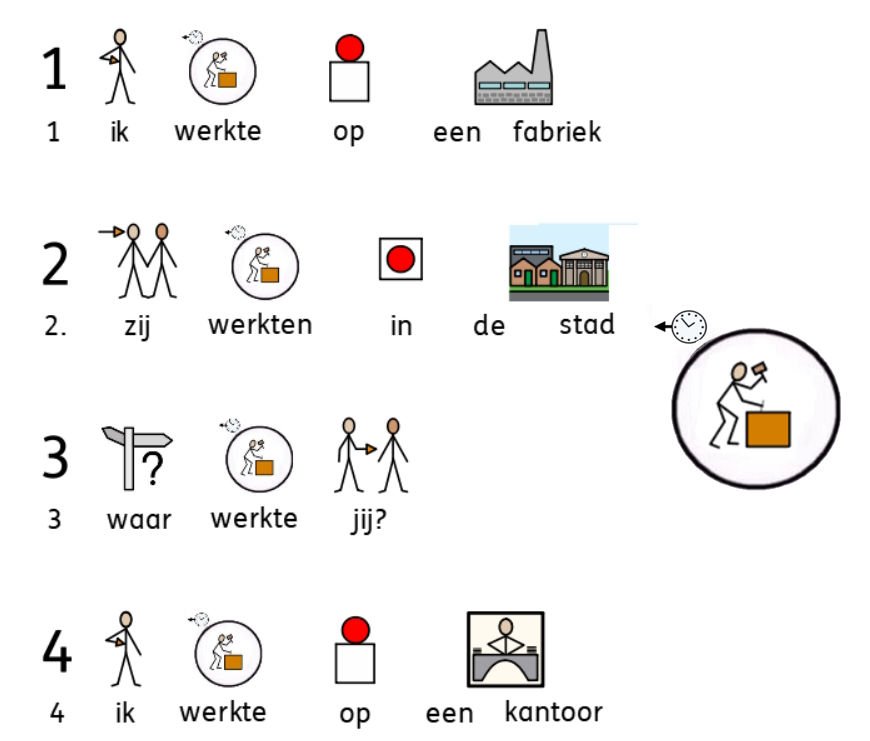More on regular verbs
In Dutch, regular verbs follow a simple pattern for conjugation, which means they change form in predictable ways based on the tense (present, past, or future) and the subject (I, you, he/she/it, we, you, they).
Present Tense: To conjugate a regular verb in the present tense, you usually add -t for the third person singular (he/she/it) and -en for the plural forms. For example, with the verb "werken" (to work), you get "ik werk" (I work), "hij werkt" (he works), "wij werken" (we work).
Past Tense: Regular verbs in the past tense typically add -de or -te to the stem for the singular forms, and -den or -ten for the plural, depending on the ending of the verb stem. For example, "werken" becomes "ik werkte" (I worked) and "wij werkten" (we worked).
Perfect Tense: This is formed with the auxiliary verb "hebben" (to have) or "zijn" (to be) plus the past participle, which for regular verbs is formed by adding -d or -t to the stem, with "ge-" at the beginning. For "werken," it's "gewerkt" (worked), so "ik heb gewerkt" (I have worked).
Remember, regular verbs are predictable, so once you learn the pattern, it's easier to conjugate new verbs you encounter!
<<<


